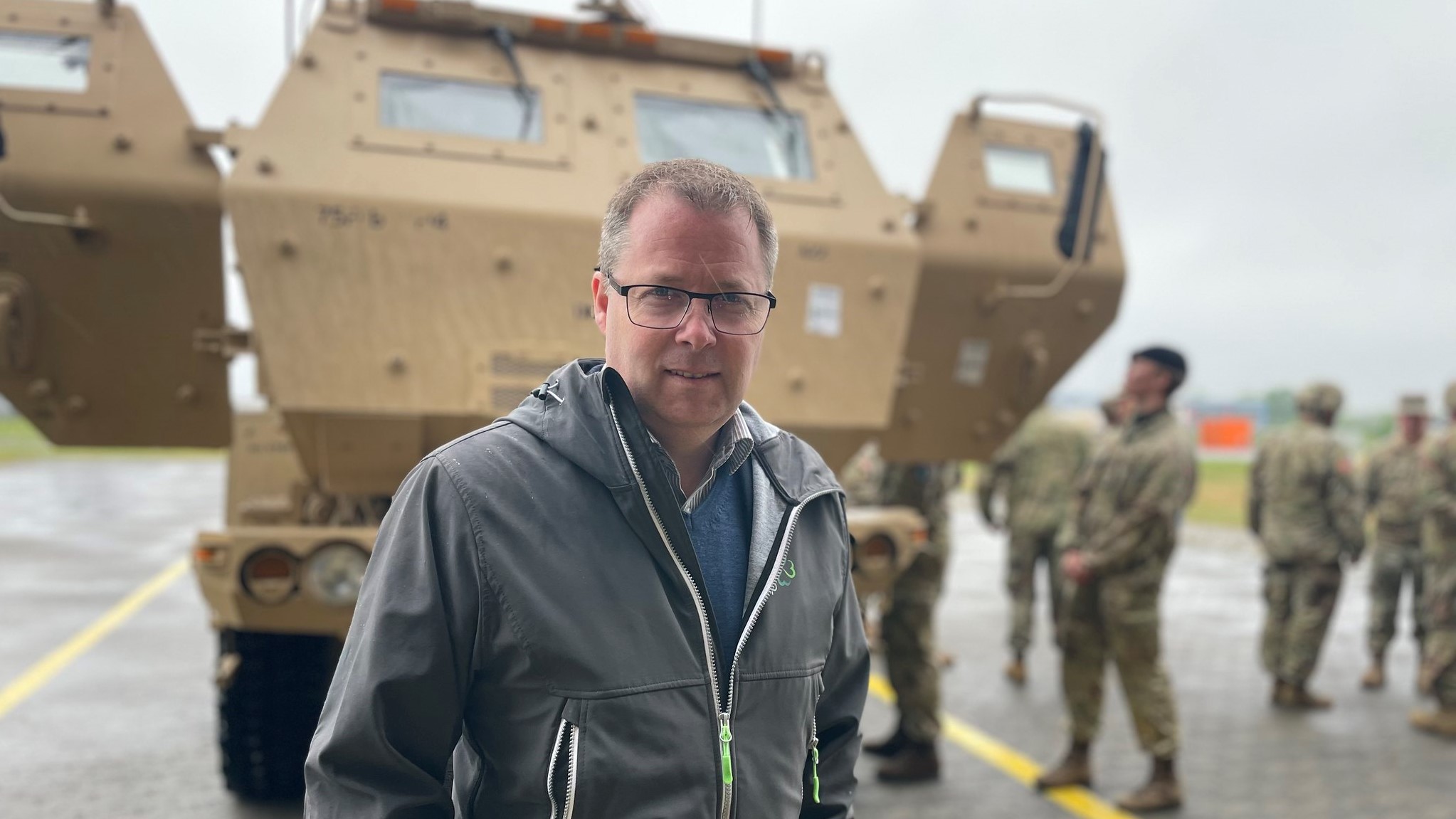
Norwegian defense minister Bjørn Arild Gram pictured during the Defender Europe exercise. (Norwegian Mod)
WASHINGTON — With Sweden and Finland nearing NATO membership, the question of how they will reshape the military alliance — and the military planning of the other Nordic nations — has been front and center especially in the mind of Bjørn Arild Gram, Norway’s defense minister.
Talking to a small group of reporters last week while visiting Washington, Gram made it clear that while he knows things will change, exactly how it all ends up will take some time to work out.
“The corporation has increased, and we will see that we have to look at our defense planning now. We can see where the geography as a whole, infrastructure, lines of communication [will change] for instance. And of course we have our attention in the high north,” Gram said. “Sweden, Finland to a certain degree also have [that], but they also look more at the Baltic Sea region and this will be more connected.
“So what happens in one area can affect the other, so we have to see this more as a whole and that will affect our planning or operations.”
RELATED: Norway’s chief of defense: Finland, Sweden in NATO ‘opens up a lot of possibilities’
Gram noted that in 2024, the biannual Cold Response exercise — an event organized by Norway which NATO states involves “around 30,000 troops from 27 countries from Europe and North America” operating in cold environs — will be rebranded Nordic Response and include Finland and Sweden as part of the operating area. That will serve as the first real test of concepts of operation when the two are members of the full alliance. (While both Hungary and Turkey remain to ratify Helsinki and Stockholm as full NATO members, alliance expansion is widely regarded as a when, not if, situation.)
The new geopolitical map would feature Finland as the front-line of NATO, with Sweden providing more defense depth on the map. In theory, that could free up Norway from having to invest as much in its frontline forces and instead shuffle funding elsewhere. But the minister, for his part, doesn’t predict major shifts in defense investments.
“I think we heard some discussion that, ‘Norway can do navy and Finland does army’ — that’s way too simple. It’s more complicated than that,” he said. “But we can be more complimentary [with other nations], I think.
The processes of 🇫🇮 & 🇸🇪 military integration into #NATO is steadily moving forward at the speed of relevance. Accession and Integration Working Groups are moving ahead and a formal update on their work will be provided in early December @NATO.#WeAreNATO #StrongerTogether pic.twitter.com/U61EAoqlwp
— NATO ACT (@NATO_ACT) September 27, 2022
“I agree that reinforcement from west to east, lines of communication across the Atlantic will be even more important. I think Norway can have an increased role even when it comes to reinforcing Sweden and Finland. So, we have to think this through again,” he added. “I agree that it gives some depth, but still, we still have a border with Russia. We have the Barents Sea and the Arctic area. So I think we still have an important role to play there and also responsibility on behalf of the alliance and our closest allies.”
After A Cancellation, A Race For Maritime Helos
On the acquisition side, Norway continues to look at options for replacing the NH-90 helicopter, which the government cancelled in June for what it described as a lack of capability. During the interview, Gram defended the decision, saying that the “shortest” way to get a new maritime helicopter was to cancel the program and start over, even though it will take a “process” to select a new option.
As to what those options may be, Gram said they were in talks with American firms about US made helicopters — presumably the Sikorsky-made MH-60R would be one option — but are also looking back to Europe. Regardless of what the long-term solution is, however, Norway is open to a shorter-term option that could help fill the gap between when a new helicopter would be available and when the NH90s were supposed to be ready for action.
“There may not be any quick fix because it takes time to produce these helicopters. We have raised this question with the Americans if there anything that can be done in both the short term and also on a more permanent basis to help us acquire maritime helicopters as soon as possible,” Gram said. “We’re also checking with other allies if there is some kind of solution maybe to lease something or help us in the short term.”
Filling that gap in the short-term is important not just from Norway’s need for anti-submarine capabilities in the high north, where Russian subs often operate, but because the Norwegian military needs to make sure it doesn’t suffer brain drain from the helicopter community. Or as Gram put it, “taking care of the those who are working on this — pilots and mechanics and so on, technicians, so we don’t lose their competence.”
Army eyes TBI monitoring, wearable tech for soldiers in high-risk billets
“We are also looking at what additional personal protective equipment we can provide to our folks, especially instructors and others who are routinely exposed to blast pressure,” said Army Secretary Christine Wormuth.


























